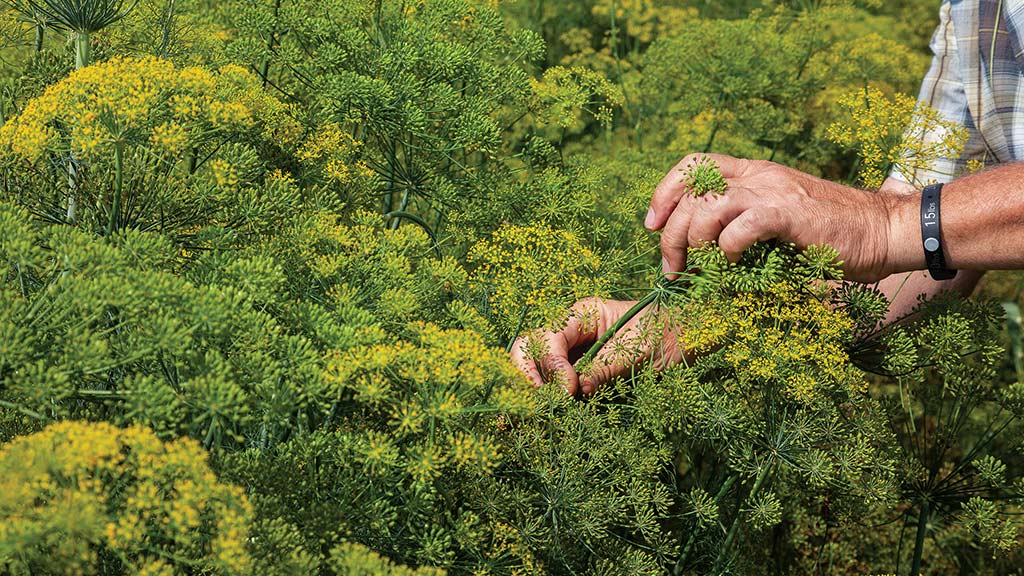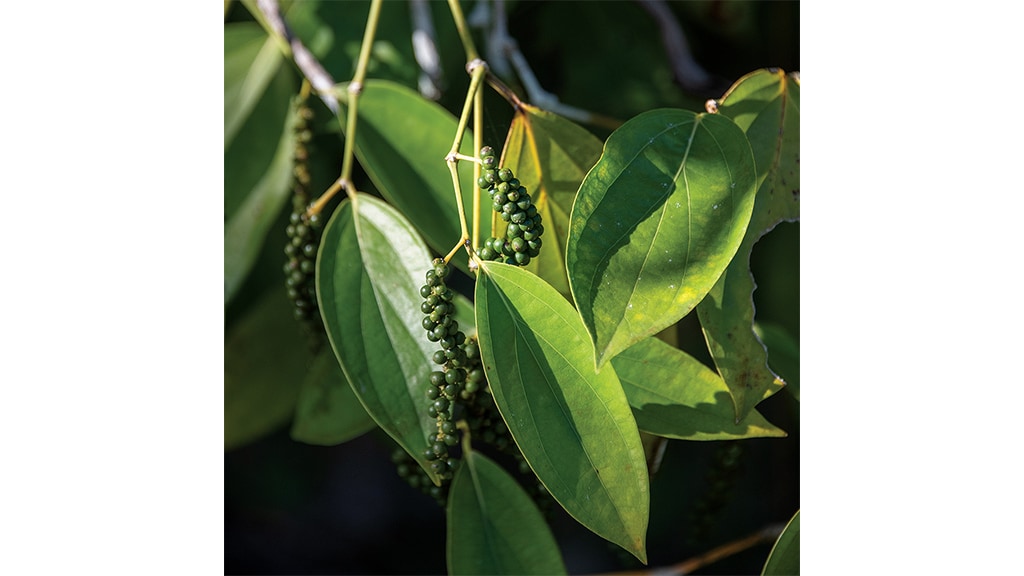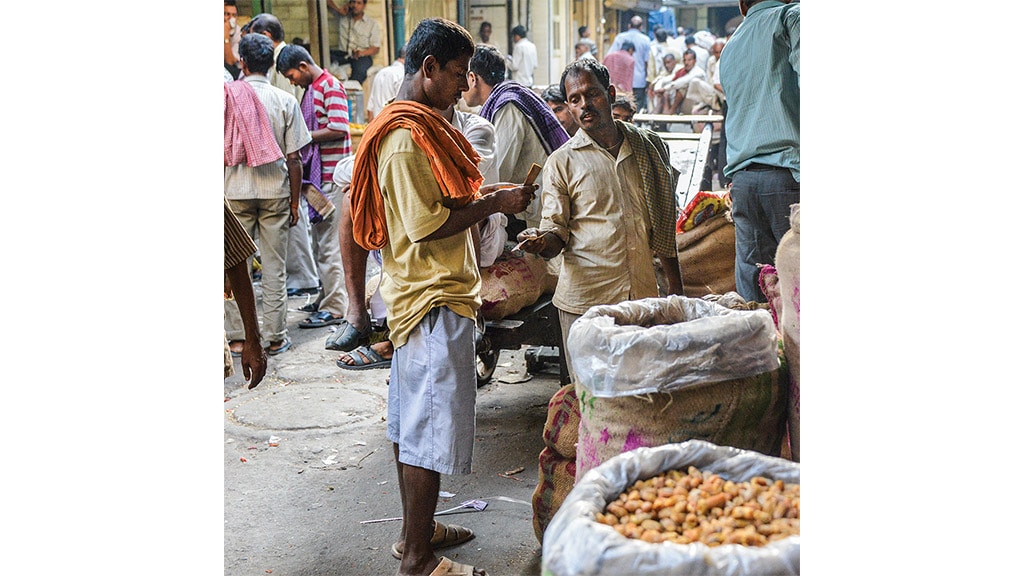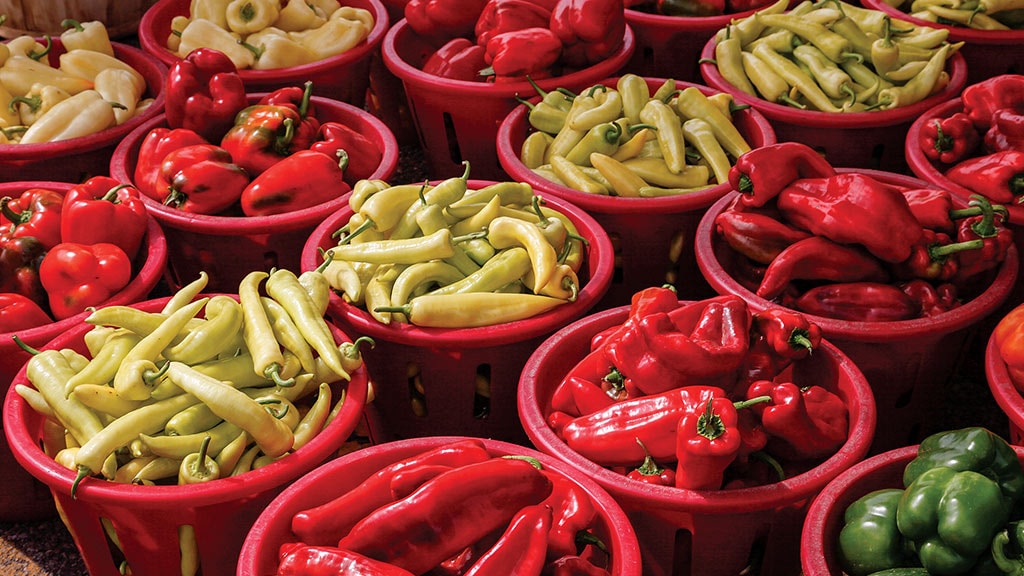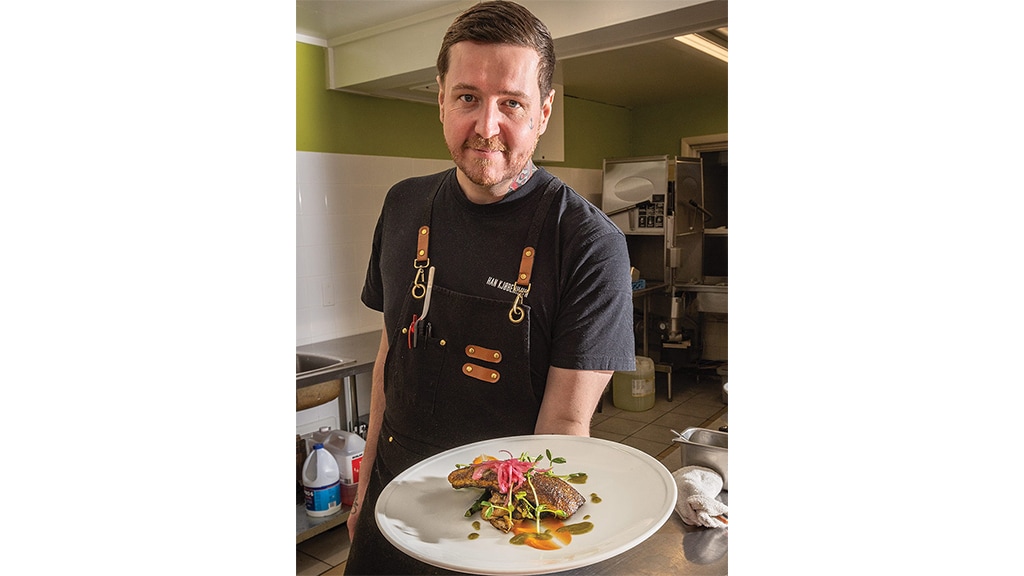
Spices laid the foundations of global trade and they're still driving changes today.
Education June 01, 2024
A World of Spice
Spices laid the foundations of global trade and they're still driving changes today.
by Lorne McClinton
Watching Jay Heikkeinen, the head chef at Hotel Wolfe Island, create his personal Moroccan ras el hanout spice blend for the sumac-blackened walleye dinner special is like witnessing modern day alchemy being done with a tablespoon. He combines a few base ingredients: ground fennel, cumin, ginger, turmeric, and a few other herbs and spices into a mixing bowl, gives them a stir, and they turn into pure culinary gold. The scent alone is enough to transport you to Casablanca.
There's never been a better time to be an adventurous diner. We've every flavor in the world at our fingertips. There's not a supermarket in the country that doesn't carry a vast array of fresh and dried herbs, spices, and too many sauces to count. Amazon and online sellers offer even more. They are so fresh they haven't had a chance to have lost any potency.
Thanks to the growth in popularity of international cuisine, especially in Europe and North America, the herb and spice market is booming like never before. The fresh herb market is growing phenomenally. According to a Market Research Future Report (MRFR) press release, their 2023 "Global Fresh Herbs Market Overview," published in April 2023, the fresh herb market is expected to grow at a compound annual growth rate (CAGR) of 4.15% this decade.
The global spices and seasonings market, which includes whole spices, ground spices, blends, rubs, marinades, and sauces, is much larger. According to MarketsandMarkets' "Spices and Seasonings Market Analysis" report, it will grow from USD $21.3 billion in 2021 to USD $27.4 billion in 2026, a CAGR of 5.2%. The growth is being driven by consumer demand for a broad range of flavor options, including ethnic options, for their food.
Chefs like Heikkeinen are part of the reason why. He's developed very eclectic multinational tastes over his 20-year career, and it shows in the dining room's constantly changing menu. Sometimes it'll include beef vindaloo, a butter chicken or a lamb curry using a recipe he learned from his Indian boss Rajeev when he first started cooking at the Tsawwassen Coast Hotel in British Columbia when he was 16. Other times it offers his variation of popular carvings like prime rib.
"My absolute favorite individual spice is fennel seed," Heikkeinen says. "My favorite blends of spices are Moroccan-style blends like zaatar, ras el hanout, and baharat. We [kitchen staff] understand the base flavors, so instead of buying pre-mixed spices, we literally blend all our own. It's like someone making perfume in the Middle East who weighs little bits of stuff and writes down recipes, then based on what we find really works, we start to play."
Despite constantly being fascinated with almost all kinds of cuisines, Heikkeinen says, like everyone, he has comfort flavors that he goes back to again and again. For him it's poultry seasoning.
"I love poultry seasoning, it always triggers fond memories of big family gatherings and making stuffing with my grandpa," Heikkeinen says. "It's one of my favorite smells of all times. The spices vary, but sage, marjoram, parsley, and thyme are always there."
Above. The terms "herbs" and "spices" are used interchangeably but they’re two different things. Herbs like dill, mint, oregano, bay leaf, basil, and rosemary are plant leaves. Spices are made from plants' bark, aromatic seeds, flowers, and the roots. Black pepper was as valuable as gold from antiquity through to the Renaissance era. Peppers are an important part of Asian cuisine but hadn’t been available until the Spanish introduced them. Open-air spice markets are still a common site in the Middle East, south and southeast Asia.
An amazing history. Our ancestors would be awestruck at our good fortune to have such inexpensive herbs and spices so widely available today. Until the 1700s, they were so rare, and generated such immense wealth, that empires rose and fell on their trade. Black pepper was as valuable as gold from antiquity through to the Renaissance era. Canadians and Americans think nothing of the little bit of pepper kept in their kitchens today, but as recently as 400 years ago, only the richest of the rich could afford it.
How valuable was it? When the Visigoths sacked Rome in 410 AD, 3,000 pounds of pepper was included as part of the ransom demand required to lift the siege.
There was such a huge demand for spices through the Renaissance era that it was the driving force behind the Age of Discovery. Christopher Columbus wasn't looking for the Americas when he set sail in 1492, he was looking for a sea route to India that would allow Spain to cut Arab middlemen and their camel caravans out of the spice trade. Portuguese explorer Vasco da Gama ended the Arab monopoly on the spice trade in 1498 when he discovered it was possible to reach India from Europe by sailing around the southern tip of Africa.
The spice trade played a pivotal role in American history, too. In 1667 the Dutch happily traded New Netherlands, modern day New York, to the British in exchange for Pulau Run, an obscure island in modern day Indonesia, in the Treaty of Breda. While it seems like a poor trade today, at the time Pulau Run was the lone source of nutmeg and mace.
While the terms "herbs" and "spices" are used interchangeably, they're two distinct types of seasonings. Britannica says spices like cinnamon, cloves, nutmeg, and allspice, are made from the bark, aromatic seeds, flowers, and the roots of plants that have been dried and crushed. Herbs like dill, mint, oregano, bay leaf, basil, and rosemary are plant leaves.
Above. Heikkeinen keeps over 100 dried herbs and spices on hand at Hotel Wolfe Island. Watching him create his ras el hanout spice blend for the blackened-sumac walleye and baharat broccolini is like witnessing modern day alchemy.
Still driving change. Bunches of fresh herbs can now be found in most grocery stores. Some offer whole bunches and herbs growing in pots, too. As far as consumers are concerned, the fresher their herbs are, the better. Sobeys, the number two grocer in Canada, partnered with the German-based vertical farming company, Infarm, to install hydroponic vertical farms in some locations in 2021. The goal is to be able to offer their consumers basil, cilantro, mint, and parsley that have been grown on site.
The companies later announced they were expanding their earlier partnership by building a much larger growing center, and distribution hubs in Calgary, Alberta; Winnipeg, Manitoba; Halifax, Nova Scotia; and Hamilton, Ontario for 2023. An Infarm press release says their new 37,000-square-foot facility at the Hamilton site will be the largest Infarm Growing Center in North America.
"We are passionate about bringing Canadian families the best, freshest, most delicious produce every single day," says Niluka Kottegoda, Vice President Customer Experience at Sobeys Inc. "We received overwhelmingly positive feedback from our customers and our store teams about the current Infarm product grown in our stores. We are thrilled to expand into the Infarm Growing Centers as they allow us to exponentially offer these great local products to a multitude of communities across Canada all year-round."
Heikkeinen receives two shipments of spices a week at The Hotel. The restaurant goes through large volumes, so he doesn't worry about them going stale. The first thing he looks for when he's buying herbs and spices is the supplier. He wants to know where they are coming from. Is it local? Is it fair trade and most importantly is it consistent?
"I need to make sure my purveyor can supply me with a consistent product," Heikkeinen says. "I don't want to have to worry about what we call duck-duck-goose. Take jalapenos [for example], I don't want to worry my shipment will largely contain jalapenos that are a little bit spicy but have a few mixed in that are so hot they spoil someone's meal."
Diets are changing rapidly as immigration exposes consumers to new cuisines. For Heikkeinen, it's been an adventure since taking over as the head chef at the restaurant in July 2023.
"We try to keep things at peak freshness," Heikkeinen says. "That's part of the reason I change the menu so often. It's based on what's available, what I can keep, what's going to hold, what's going to last, and what's going to sell. I'm still trying to find the happy place where everyone has everything they need." ‡
Read More

AGRICULTURE, SPECIALTY/NICHE
Floating Harvest
Following the call to wild rice.

AGRICULTURE, SUSTAINABILITY
Teaming up with Nature
Agroecology helps the desert bloom on this California homestead.

